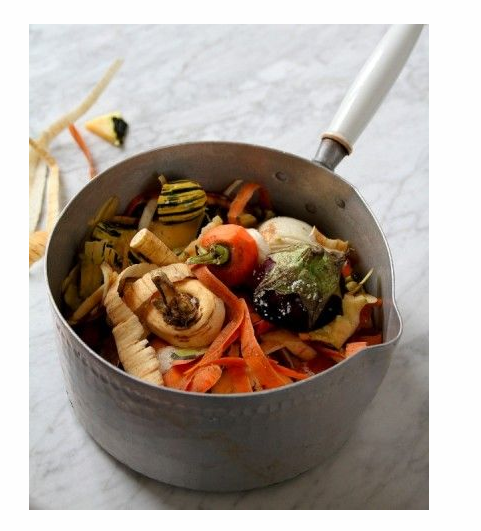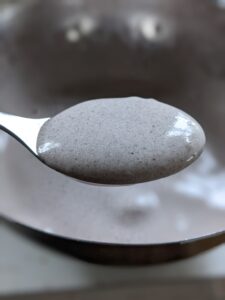
Have you taken a closer look at the composition of the ready-made broths… Palm fat, thickeners, xanthan gum, maltodextrin… Lots of little-known names that don't inspire confidence!
So it's so easy to make a homemade broth with your leftover foods. How to do ? thanks to your vegetable peelings.
In your vegetable broth, you can put the peels of onions, carrots, turnips, celeriac and all the root vegetables. I also add the green of leeks and celery branches, the core of salads. Not to mention the stems of parsley or fresh herbs. In short, all that remains after having prepared the vegetables.
Vegetables from the cabbage family tend to bitter the broth. It is not to everyone's taste.
Some also advise against potato peels that contain a toxin: solanine. The peels, leaves and unripe fruit may be toxics but it is above all sprouts or green tubers that have a high solanine content.
Easy ! The only constraint, to clean the vegetables well with a brush before, to remove the soil. And if the vegetables are not organic, you can wash them with baking soda which acts as a natural detergent without affecting the taste of the vegetable.
In the USA, vegetables are sold very often already clean. A great advantage when you are pregnant and have never been in contact with toxoplasmosis like me. Moreover, the risk is so low in the United States, that a pregnant woman is tested only at the beginning of her pregnancy for this disease, even if you are negative.
Cooking tip
The principle is simple, if the ingredients are cooked, starting with cold water, they will give all their nutrients to the broth.
On the other hand, if you put an ingredient in a boiling liquid, it is the ingredient that takes on the taste of the liquid. So usually when you want to make a broth that tastes good, you put the ingredients in cold water.
For meat broth (chicken, beef, turkey ...). When cooking your broth, simply add a carcass of poultry or a bone left over from one of your meals.
Preservation
Please note that the broth will not preserve for more than a week in the fridge. Prefer storage in the freezer in a suitable container.
For a longer preservation, you can prepare a dry way of your broth
Unlike the previous recipe, the peels are “dried” in the oven (or dehydrator). The temperature should be low enough (120 ° C or 240 ° F max). The drying time will depend on the peelings (depending on the vegetable and the thickness) but at least 30 minutes. Keep an eye on your oven so you don't burn your preparation.
Finish by mixing everything together, and you obtain a dry powdered broth, which you can use as is as a condiment, or by moisturizing it in water (1 tbsp for 1 liter of water / 32 oz) .

Vegetable peel broth
Equipment
- Large capacity pot - 5 liters / 169 oz
Ingredients
- Vegetable peelings
- Water at the height of the vegetable peelings
- 1 tsp Salt
- 2 Clous de girofle
- 1 bay leaf
- 1 bouquet of aromatic herbs
Instructions
- Put your peels in a saucepan and cover with water.
- Salt, add cloves (2), 1 bay leaf and other herbs to taste.
- Bring to a boil and cook for 30 min.
- Stop the heat and step aside for at least 1 hour.
- Strain the broth and pour into a bottle or ice cube trays for longer storage.



